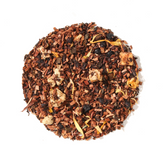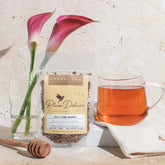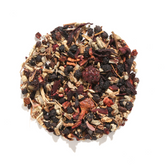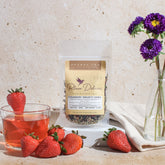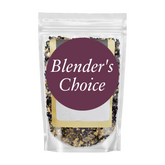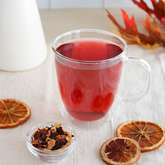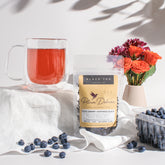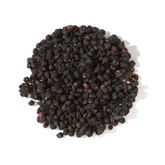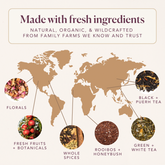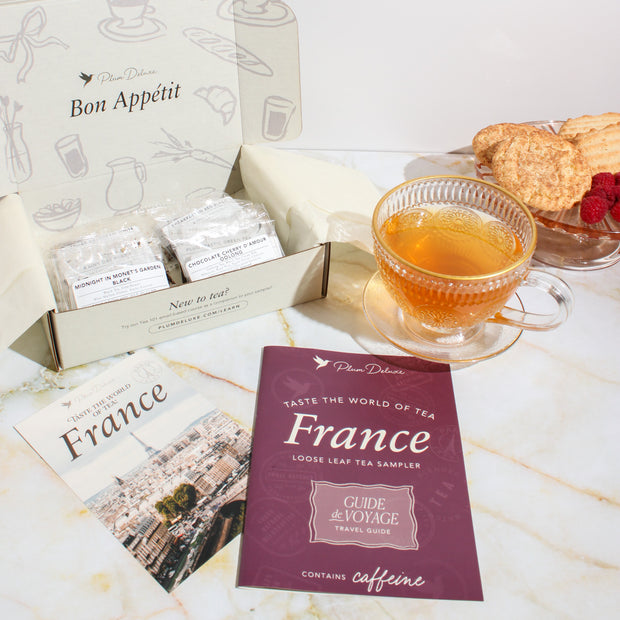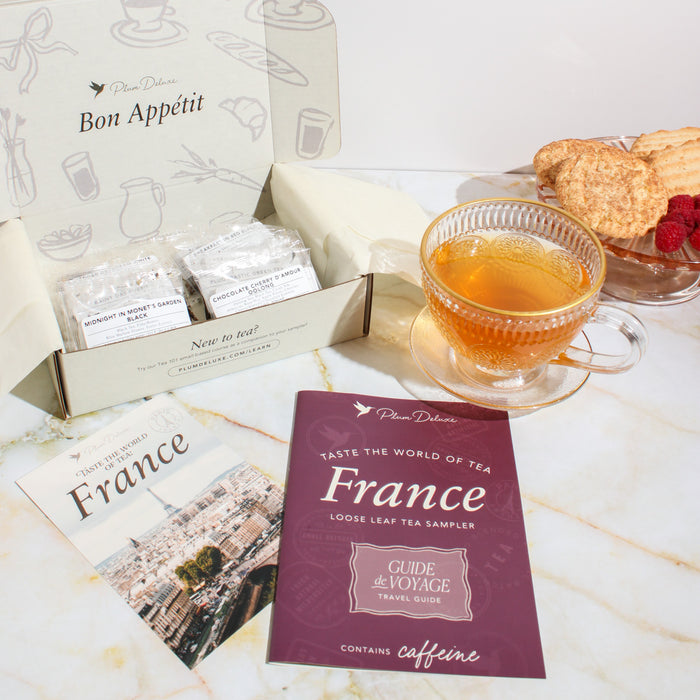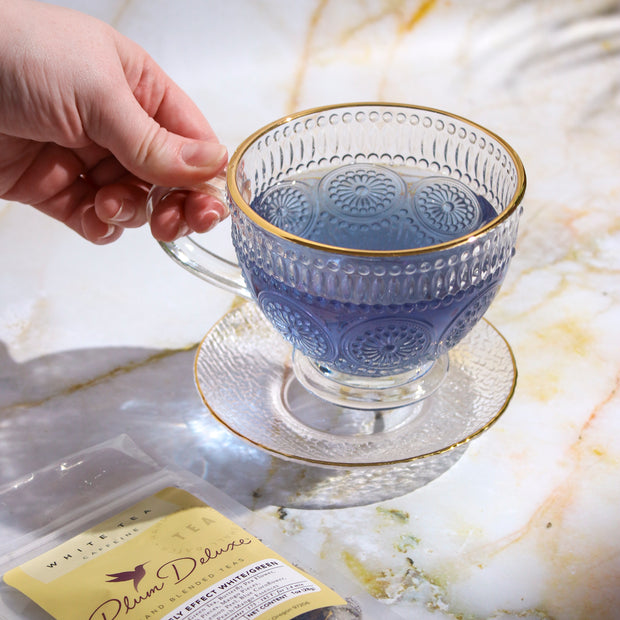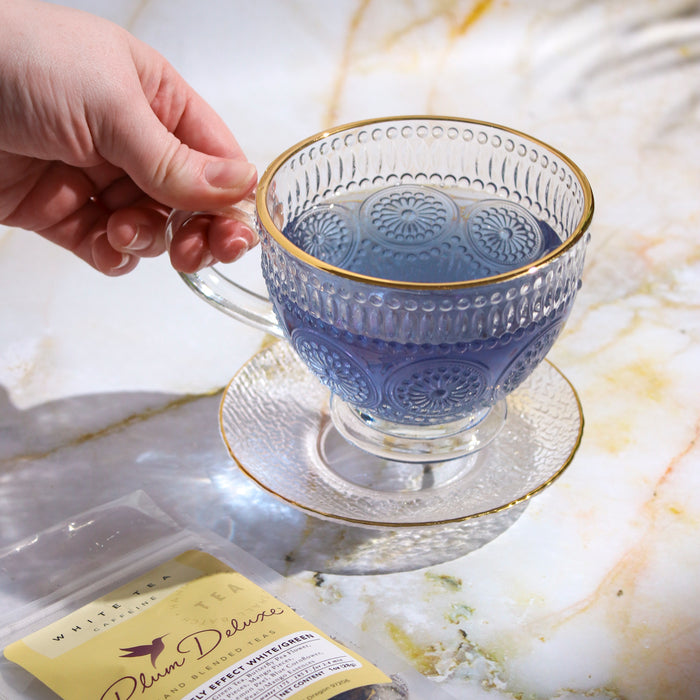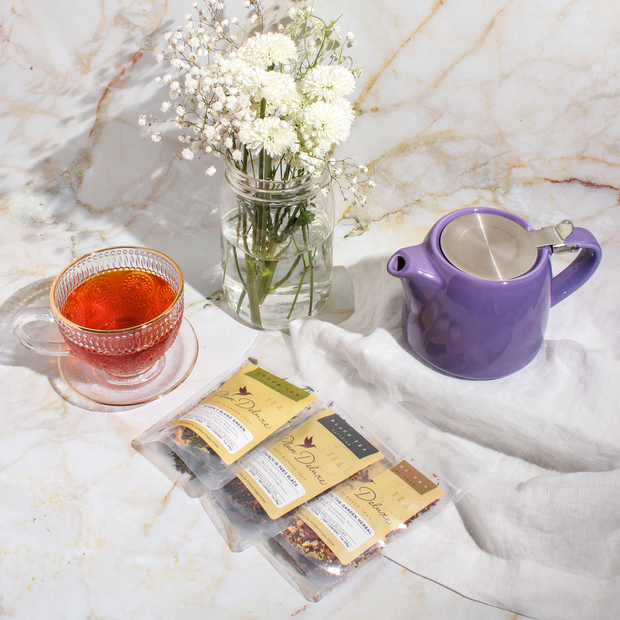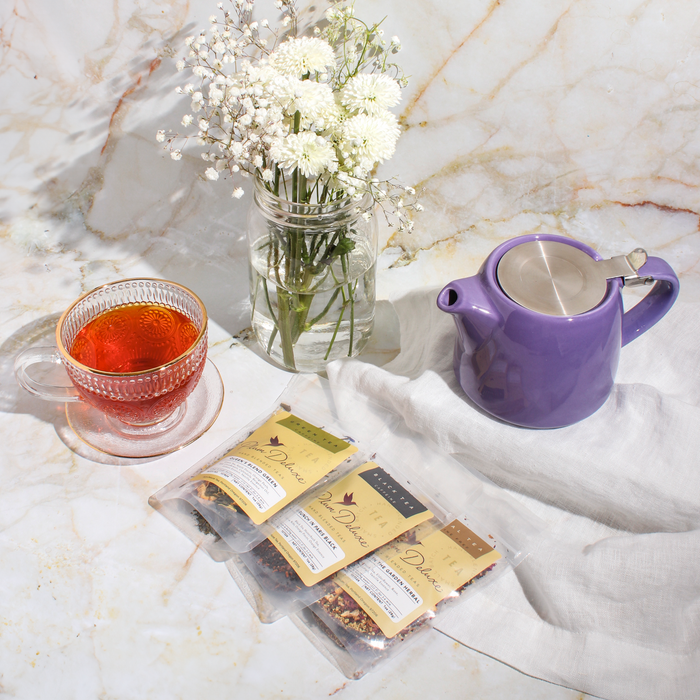
The Short Answer and the Long Answer
The short answer is: It depends.
The long answer requires a bit of history and definition to explain: what exactly is Earl Grey tea?
The story begins with who exactly was Earl Grey. He was actually a very interesting and influential person once upon a time, but I’ll give you the cliff notes version.
Earl Charles Grey was an English nobleman in the 1800s. In addition to becoming Prime Minister and helping abolish slavery in England, he also had a delicious tea named after him. The how and why is best left to historians.
Though we don’t know for certain exactly what recipe was used for the original Earl Grey blend, we do know that bergamot oil – made from a specific type of orange grown in Italy – is essential to Earl Grey tea. In fact, bergamot is what makes an Earl Grey an Earl Grey. Plain and simple. There really are no other rules.
So, once more for emphasis, Earl Grey is defined by flavoring – the bergamot oil – rather than the type of tea itself. Which is why nailing down the caffeine content in Earl Grey is such a tricky business. The answer to the caffeine question is: There are lots of answers.

It’s All About That Base
Traditionally, Earl Greys use black tea as their base. And classic blends using black teas are delicious. They couldn’t have maintained their position as a universally adored beverage for the last two hundred years if they weren’t. A nice strong cuppa like the classic Mindful Morning blend, with its subtle citrusy zest, is a time-tested, tried and true way to jumpstart your morning or provide that perfect pick-me-up when you feel yourself starting to droop in the afternoon.
But dare to be different. Have you ever tried a green tea-based Earl Grey? An Earl Green, if you will. (No one calls them that, as far as I’m aware. But they should.) Earl Greens such as the Queen’s Blend Lemon Crème provide a lighter, more subtle take on the original Earl Grey (or the OG E.G., as I’m pretty sure the kids are calling it). Green apple pieces and lemon essence create a crisp, refreshing nuance not often found in more conventional Earl Grey blends. If you haven’t tried it yet, do yourself a favor. Go green. You’ll be glad you did.
Or, if an Earl Green doesn’t strike your fancy, try an Herbal Grey! (Also not a real thing. But that’s what we’re calling it.) Just like black and green teas, herbal teas can also be Earl Grey-inspired. Such is the Healthy, Wealthy, and Wise Herbal blend with bergamot, sage, lemongrass, and mint. For any die-hard Earl Grey fan who turns their nose up at herbal teas, this just might be a gateway tea into the wonderful world of herbals.

And Now for Numbers
In case you’re worried that I’ve forgotten the original point of this article, I do recall that we are here because you wanted to know how much caffeine in Earl Grey tea. And some of you may be looking for information more concrete than “it depends,” or “who’s to say, really?”
As we now all know, the caffeine content of an Earl Grey is dictated by the caffeine content of its base tea. So what does that mean?
Classic Earl Greys have been a popular breakfast tea for centuries, in part because the black tea base has a comparatively high caffeine content, making it a perfect choice for your first cup of the morning.
There are a wide variety of black teas: Assam, Keemun, Darjeeling, and more – all delicious in their way, and each with slight variations in their caffeination levels. But generally speaking, you can expect a range of 50 to 90 milligrams of caffeine in each eight ounce cup of black tea, depending on how it’s brewed. Several Plum Deluxe Earl Greys, including the Gratitude Blend, feature Ceylon tea, which falls right into that range. A strawberry Earl Grey that will put a nice pep in my step first thing in the morning? Yes, please!
Green teas are lower down on the caffeination scale, averaging closer to 35 milligrams per serving. Remember, that will fluctuate depending on the type of green tea and the strength of your steep, but even accounting for variations, you’ll likely still end up somewhere in the ballpark of 35 milligrams. So if you love Earl Grey but are trying to cut back on caffeine, once again I say, go green! (I didn’t mean for that to rhyme. Sometimes these things just happen.)
Herbal teas are naturally caffeine-free, so if you’re sipping an Herbal Grey (as we all agree they’re called), then you don’t have to worry about your caffeine intake at all!
Unless you were hoping to ingest some caffeine. In that case, you’re better off with a black blend like Delightful Morning with lavender (one of my all-time favorites), or Crème Brulée Earl Grey (also quite lovely).
The good news is, you have options! Whether you’re looking for a caffeine-heavy cuppa to kickstart your morning or a soothing herbal blend to enjoy any time of day, there is a delightful bergamot-infused Earl Grey blend to do just that.

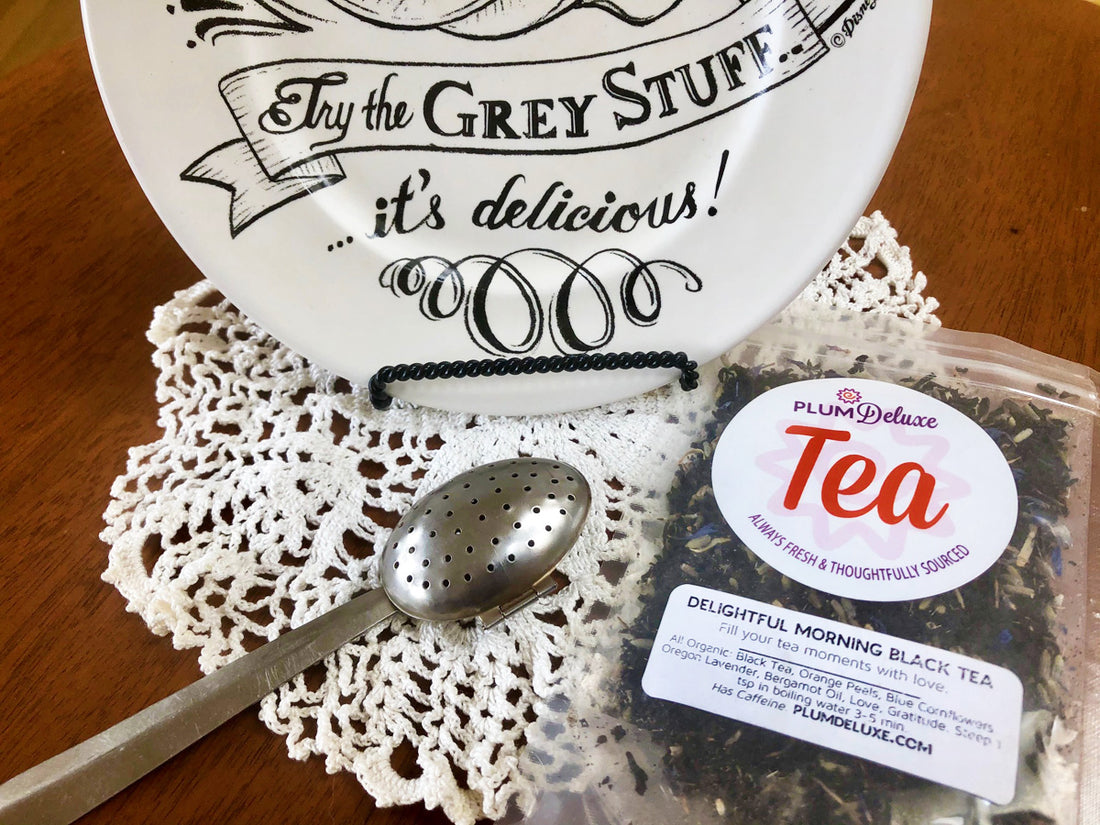
![Spring Tea Variety Pack [6-Pack Variety of Flavors]](http://www.plumdeluxe.com/cdn/shop/files/night-blooms-variety.jpg?v=1709167159&width=165)


